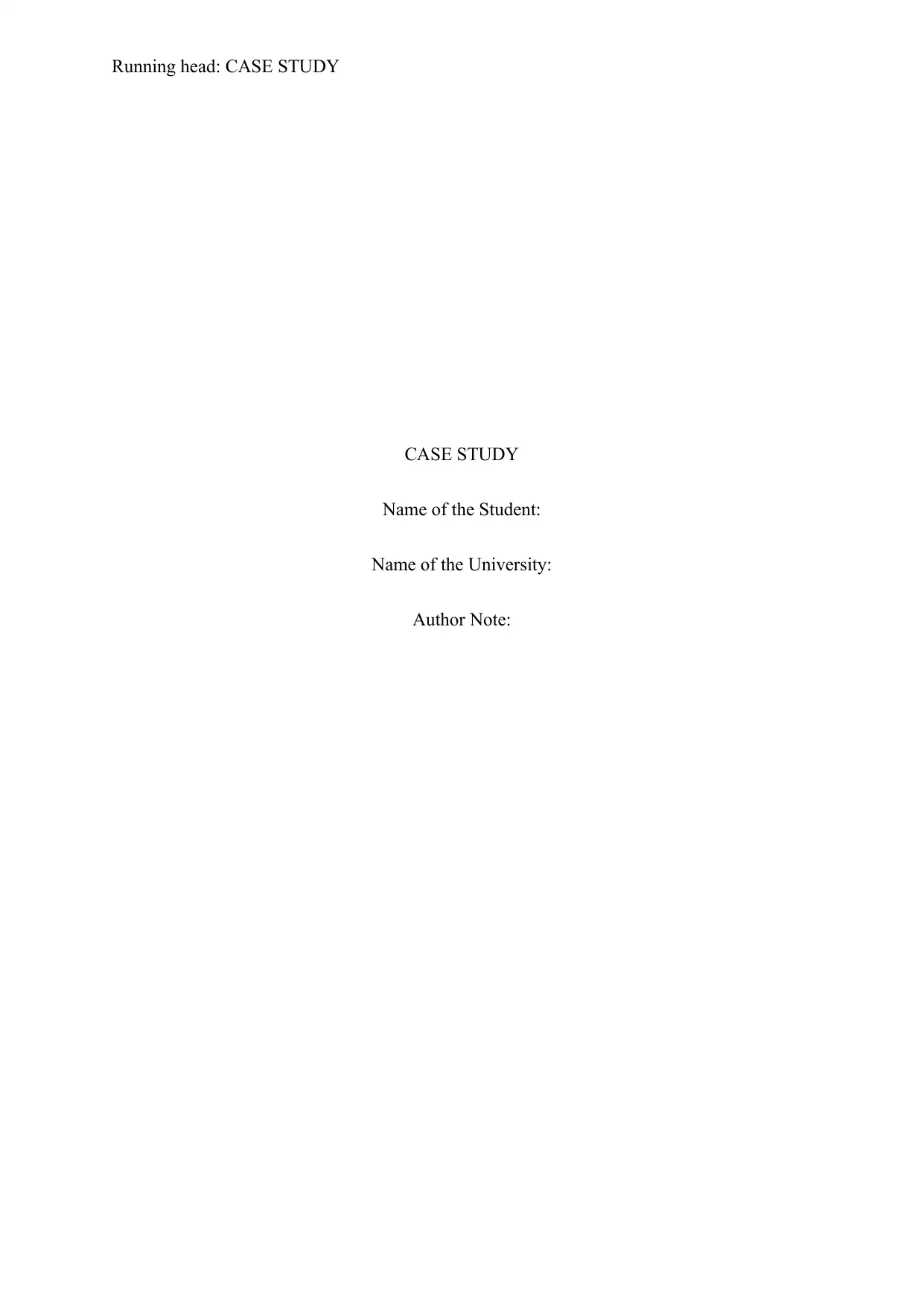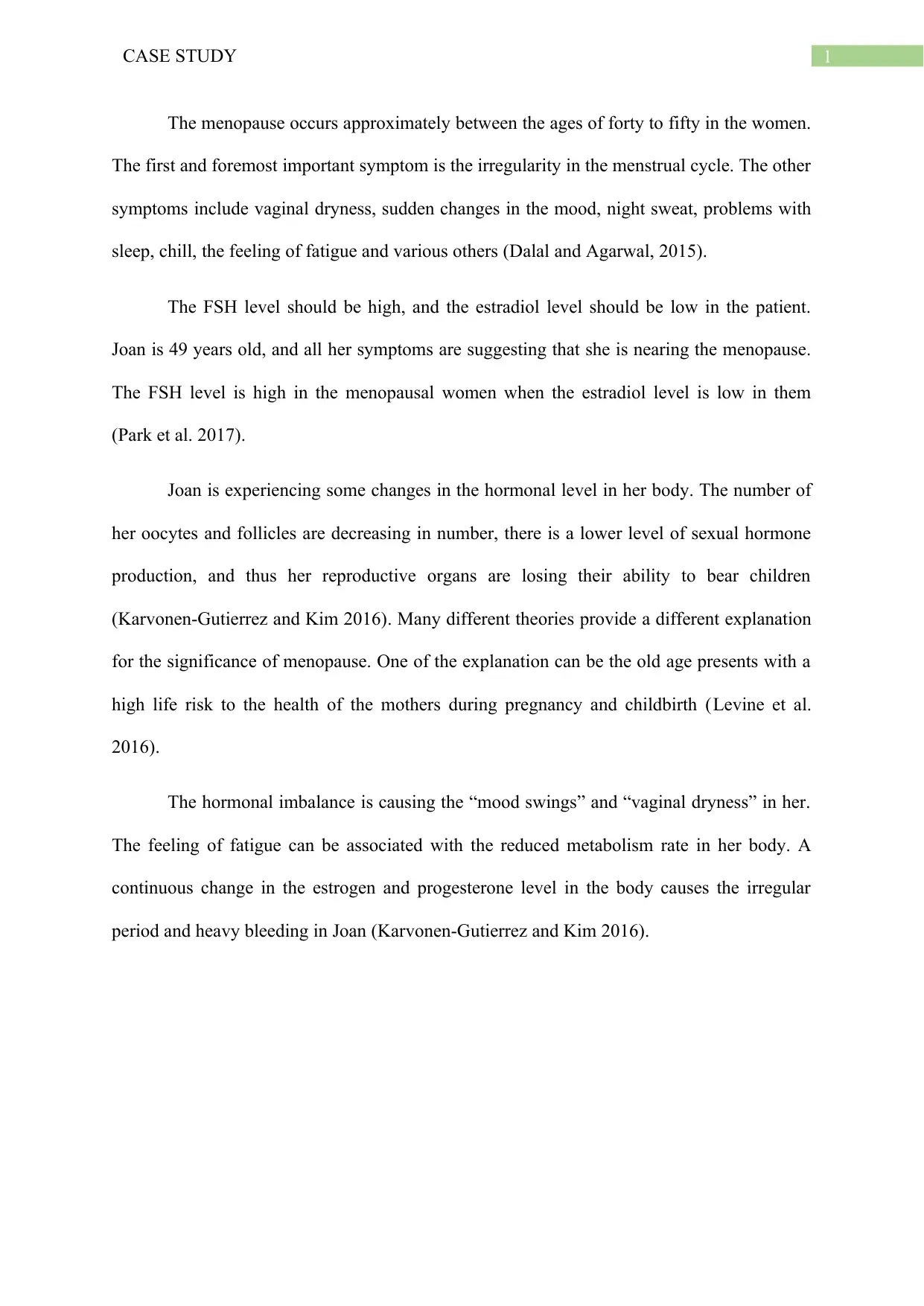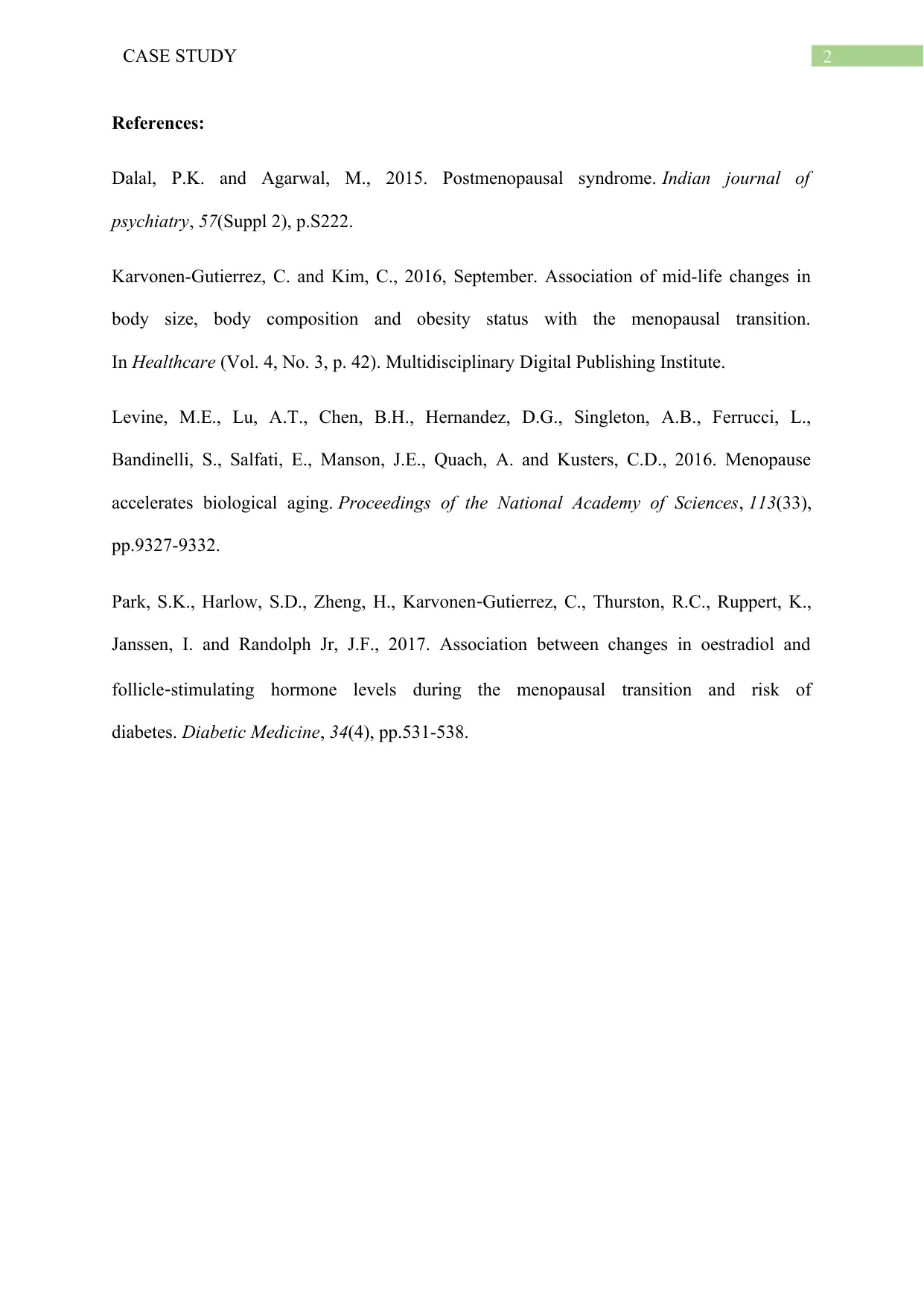Menstrual Cycle Case Study 2022
VerifiedAdded on 2022/09/16
|3
|524
|23
AI Summary
Contribute Materials
Your contribution can guide someone’s learning journey. Share your
documents today.

Running head: CASE STUDY
CASE STUDY
Name of the Student:
Name of the University:
Author Note:
CASE STUDY
Name of the Student:
Name of the University:
Author Note:
Secure Best Marks with AI Grader
Need help grading? Try our AI Grader for instant feedback on your assignments.

1CASE STUDY
The menopause occurs approximately between the ages of forty to fifty in the women.
The first and foremost important symptom is the irregularity in the menstrual cycle. The other
symptoms include vaginal dryness, sudden changes in the mood, night sweat, problems with
sleep, chill, the feeling of fatigue and various others (Dalal and Agarwal, 2015).
The FSH level should be high, and the estradiol level should be low in the patient.
Joan is 49 years old, and all her symptoms are suggesting that she is nearing the menopause.
The FSH level is high in the menopausal women when the estradiol level is low in them
(Park et al. 2017).
Joan is experiencing some changes in the hormonal level in her body. The number of
her oocytes and follicles are decreasing in number, there is a lower level of sexual hormone
production, and thus her reproductive organs are losing their ability to bear children
(Karvonen-Gutierrez and Kim 2016). Many different theories provide a different explanation
for the significance of menopause. One of the explanation can be the old age presents with a
high life risk to the health of the mothers during pregnancy and childbirth (Levine et al.
2016).
The hormonal imbalance is causing the “mood swings” and “vaginal dryness” in her.
The feeling of fatigue can be associated with the reduced metabolism rate in her body. A
continuous change in the estrogen and progesterone level in the body causes the irregular
period and heavy bleeding in Joan (Karvonen-Gutierrez and Kim 2016).
The menopause occurs approximately between the ages of forty to fifty in the women.
The first and foremost important symptom is the irregularity in the menstrual cycle. The other
symptoms include vaginal dryness, sudden changes in the mood, night sweat, problems with
sleep, chill, the feeling of fatigue and various others (Dalal and Agarwal, 2015).
The FSH level should be high, and the estradiol level should be low in the patient.
Joan is 49 years old, and all her symptoms are suggesting that she is nearing the menopause.
The FSH level is high in the menopausal women when the estradiol level is low in them
(Park et al. 2017).
Joan is experiencing some changes in the hormonal level in her body. The number of
her oocytes and follicles are decreasing in number, there is a lower level of sexual hormone
production, and thus her reproductive organs are losing their ability to bear children
(Karvonen-Gutierrez and Kim 2016). Many different theories provide a different explanation
for the significance of menopause. One of the explanation can be the old age presents with a
high life risk to the health of the mothers during pregnancy and childbirth (Levine et al.
2016).
The hormonal imbalance is causing the “mood swings” and “vaginal dryness” in her.
The feeling of fatigue can be associated with the reduced metabolism rate in her body. A
continuous change in the estrogen and progesterone level in the body causes the irregular
period and heavy bleeding in Joan (Karvonen-Gutierrez and Kim 2016).

2CASE STUDY
References:
Dalal, P.K. and Agarwal, M., 2015. Postmenopausal syndrome. Indian journal of
psychiatry, 57(Suppl 2), p.S222.
Karvonen-Gutierrez, C. and Kim, C., 2016, September. Association of mid-life changes in
body size, body composition and obesity status with the menopausal transition.
In Healthcare (Vol. 4, No. 3, p. 42). Multidisciplinary Digital Publishing Institute.
Levine, M.E., Lu, A.T., Chen, B.H., Hernandez, D.G., Singleton, A.B., Ferrucci, L.,
Bandinelli, S., Salfati, E., Manson, J.E., Quach, A. and Kusters, C.D., 2016. Menopause
accelerates biological aging. Proceedings of the National Academy of Sciences, 113(33),
pp.9327-9332.
Park, S.K., Harlow, S.D., Zheng, H., Karvonen‐Gutierrez, C., Thurston, R.C., Ruppert, K.,
Janssen, I. and Randolph Jr, J.F., 2017. Association between changes in oestradiol and
follicle‐stimulating hormone levels during the menopausal transition and risk of
diabetes. Diabetic Medicine, 34(4), pp.531-538.
References:
Dalal, P.K. and Agarwal, M., 2015. Postmenopausal syndrome. Indian journal of
psychiatry, 57(Suppl 2), p.S222.
Karvonen-Gutierrez, C. and Kim, C., 2016, September. Association of mid-life changes in
body size, body composition and obesity status with the menopausal transition.
In Healthcare (Vol. 4, No. 3, p. 42). Multidisciplinary Digital Publishing Institute.
Levine, M.E., Lu, A.T., Chen, B.H., Hernandez, D.G., Singleton, A.B., Ferrucci, L.,
Bandinelli, S., Salfati, E., Manson, J.E., Quach, A. and Kusters, C.D., 2016. Menopause
accelerates biological aging. Proceedings of the National Academy of Sciences, 113(33),
pp.9327-9332.
Park, S.K., Harlow, S.D., Zheng, H., Karvonen‐Gutierrez, C., Thurston, R.C., Ruppert, K.,
Janssen, I. and Randolph Jr, J.F., 2017. Association between changes in oestradiol and
follicle‐stimulating hormone levels during the menopausal transition and risk of
diabetes. Diabetic Medicine, 34(4), pp.531-538.
1 out of 3
Your All-in-One AI-Powered Toolkit for Academic Success.
+13062052269
info@desklib.com
Available 24*7 on WhatsApp / Email
![[object Object]](/_next/static/media/star-bottom.7253800d.svg)
Unlock your academic potential
© 2024 | Zucol Services PVT LTD | All rights reserved.

